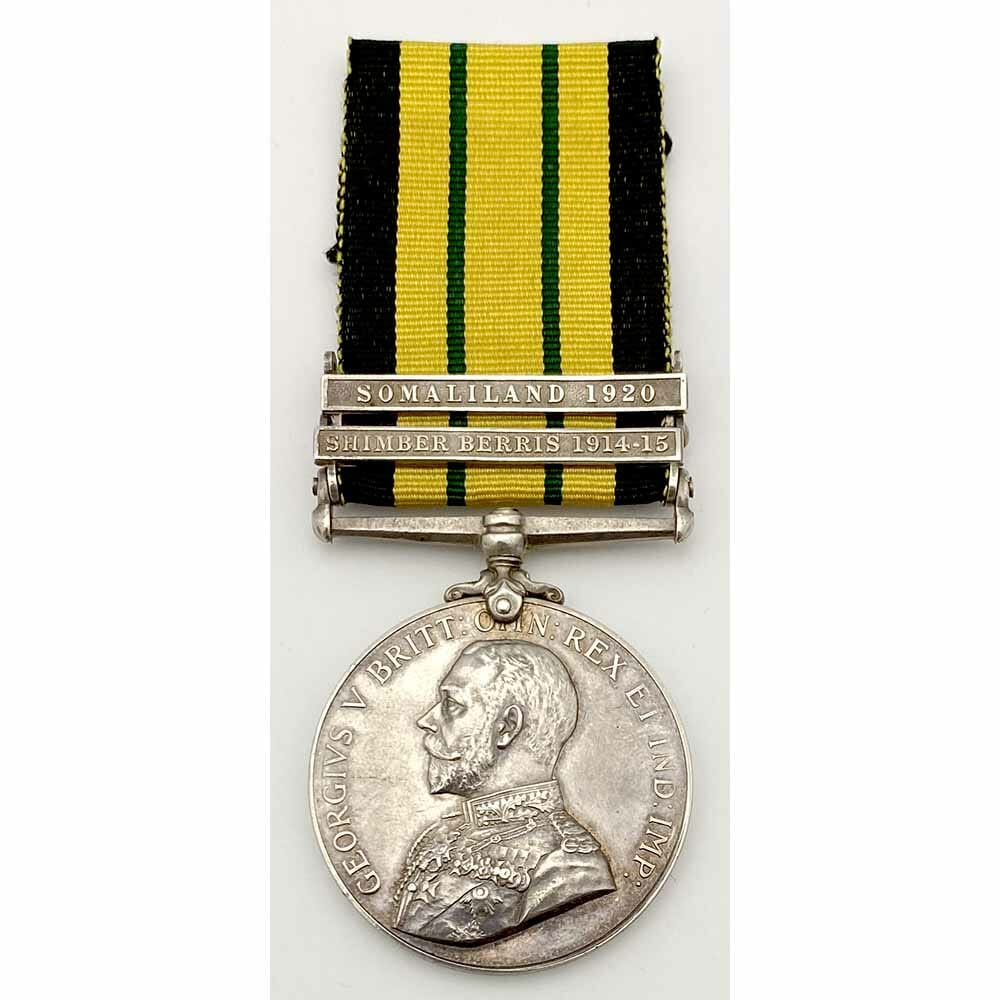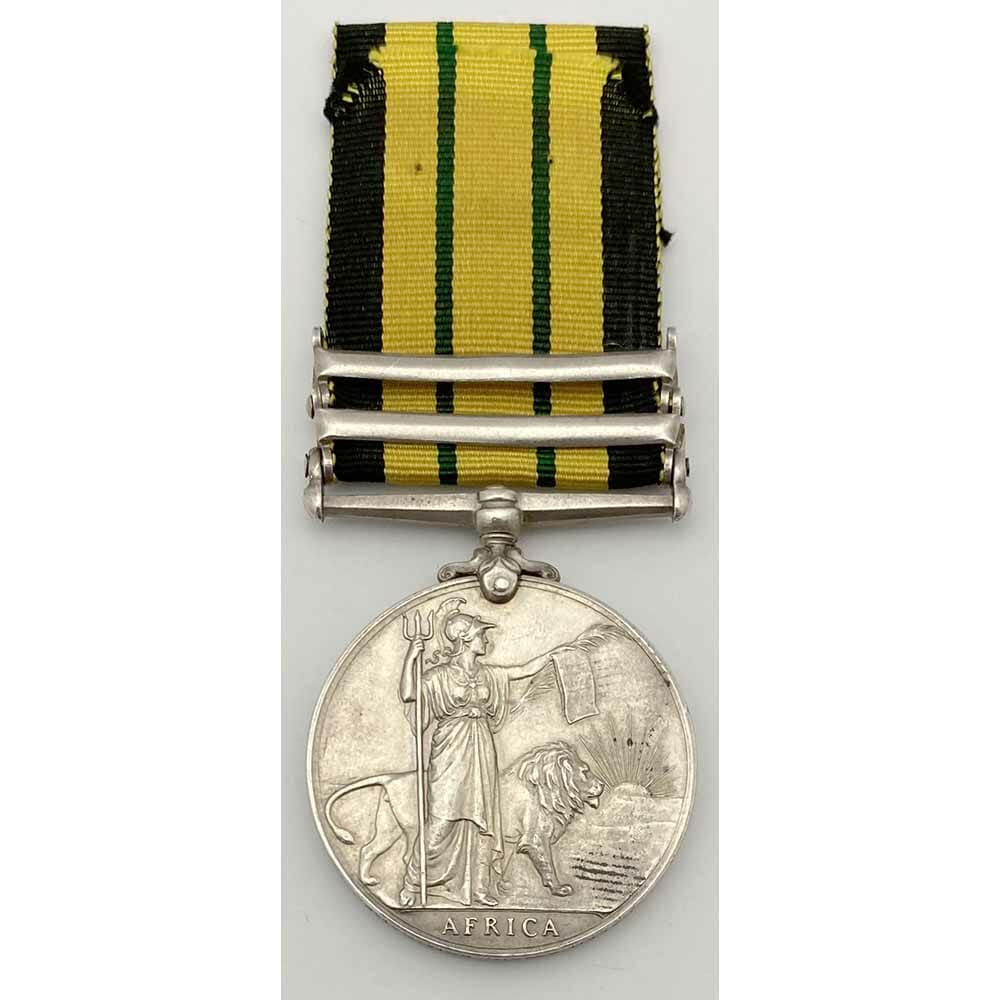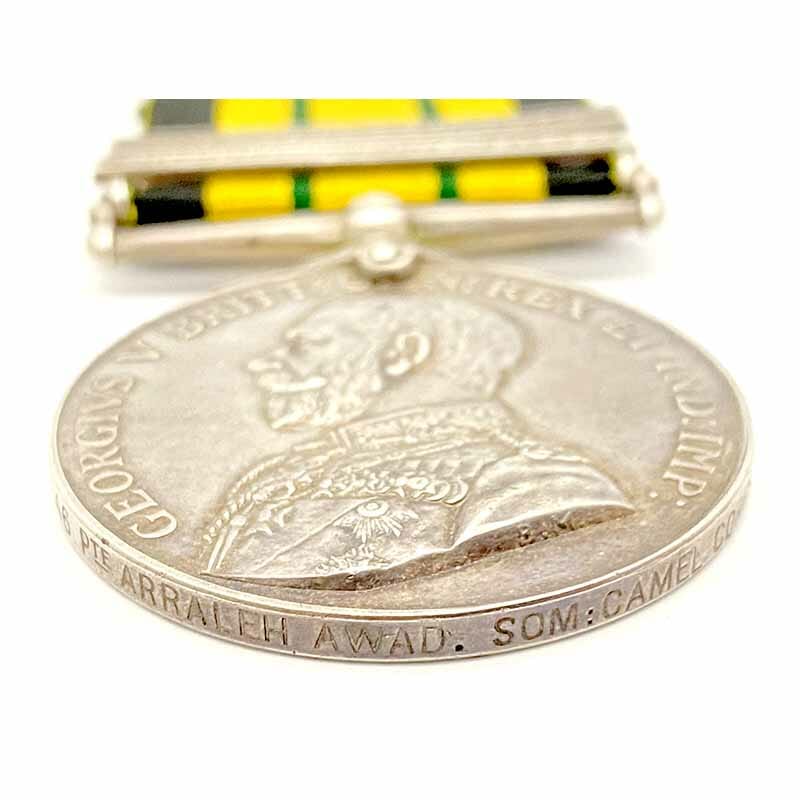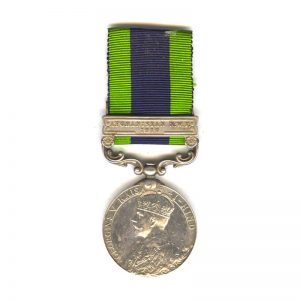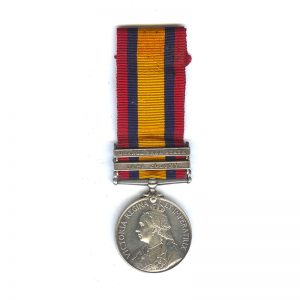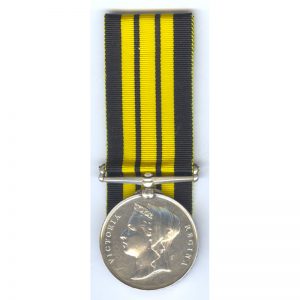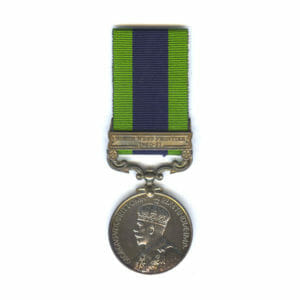Description
Africa General Service Medal, GV, 2 bars, Shimber Berris 1914-15, Somaliland 1920, 146 Private Arraleh Awad, Somaliland Camel Corps. Extremely rare and unusual combination in excellent condition.
A superb medal for both the very first campaign of the newly formed Somaliland Camel Corps, the expert Camel Riding Cavalry of the British Somaliland Forces, with addition of the Somaliland 1920 bar for the final campaign ending the Dervish Resistance under the “Mad Mullah”, for whom the unit had been officially formed to fight against.
Officially impressed: “146 Pte Arraleh Awad. Som: Camel. Corps.”
Both bars confirmed on the medal roll. Shimber Berris bar is very rare to find, almost all the examples that have appeared for sale have been to the Indian Contingent of the King’s African Rifles, including the ones we have sold over the years.
The only other example we could track was an identical entitlement to Abdi Gulaid, Somaliland Camel Corps, held in the collection of the National Army Museum, NAM 1993-12-19-1
On the medal roll for the Somaliland Camel Corps made at Burao on 24th October 1916 for the award of the Medal and Shimber Berris 1914-15 Bar.
On the medal roll for the Somaliland Camel Corps made at Burao on 12th April 1922 for entitlement to the Somaliland 1920 bar.
The Somaliland Camel Corps was an interesting Cavalry Unit based in British Somaliland, they were a “Rayid” unit of mostly Muslim soldiers, Northern Somalis who had signed colonial treaties with European Powers in the late 19th Century.
It was officially formed in 1914 and the “Shimber Berris” campaign was their first, On 12th March 1914, the Somaliland Camel Corps was formed, to maintain order in the protectorate. The corps was tasked with the already 15 year long ongoing battle against the Dervish Resistance, led by Sayid Mohamed Abdullah Hassan, more commonly known as “The Mad Mullah”.
The new members of this unit were however stepping into a deadly job, only 1 year earlier, their predecessors, the Somaliand Camel Constabulary of 110 men, had been almost annihilated when during the Battle of Dul Madoba, a Dervish force raided the Dolbahanta Clan and killed or wounded 57 of them, leading to half the unit being taken out of action.
Their first Battles were against the Dervishes at Shimber Berris between 19th and 25th November 1914 and 2nd to 9th February 1915. The column was faced with a series of masonry blockhouses. The Mullah, assisted by a German Technician and Yemeni masons, had established a number of forts with 12 inch thick bases, capable of holding 50 men.
They could only capture one fort which was rushed but the 7 Pounders present stood no chance of demolishing the forts, present at the action and among the wounded was Capt A. Carton de Wiart, future Victoria Cross Winner, in his autobiography he describes the action and how throughout the Dervishes kept up a steady stream of insults, he says he was so near to the enemy that his cane could almost reach their rifles.
The 2nd Battle in February, involved Lt Col Cubitt DSO returning with his men, now carrying plenty of high explosive but the forts had been abandoned, they were however sniped at by Dervishes present in the caves who were then bombed out.
Following on from this was 5 more years of The Mullah escaping from the British, and by 1920, the British had finally gathered enough power after WW1 was ended for the Cabinet to sanction a full on Aerial and Military Operation to finally end the 20 year spree of the Mullah.
With an Aerial Bombardment from the RAF with their DH9 Bombers, followed by A Force, including the Somali Camel Corps, the combined attack shattered the Dervish Forces. The Mad Mullah managed to slip away but by November 1920 he died of influenza ending a 20 year reign.
A Summary from African General Service Medals by R.B. Magor:
“In July Lt. Col. T. Ashley Cubitt, D.S.O., (R.F.A.) O.C. Troops and Deputy Commissioner with Major G. H. Summers (26 Lt. Cav.) as Staff Officer. was appointed
During 1914, headquarters were set up at Burao. The troops available consisted of 150 rifles 73 Carnatic Infantry, 150 rifles of the Camel Corps and 150 Indian Mounted Infantry.
The Mullah, with the help of a German technician and Yemeni masons, had built a series of masonry blockhouses on the plateau of the Burdab range, each capable of holding fifty men. The forts had walls 12' thick at the base. Fields of fire had been cleared around the forts and the area was full of caves.
On 17th November 1914 Cubitt marched out of Burao with 14 officers and 520 Indian and Somali other ranks and arrived to within three miles of Shimber Berris before he was discovered. One of the forts was rushed and captured but the second fort was more firmly defended and could not be taken. Casualties were suffered including Captain A. Carton de Wiart (4 D.G.) who wounded twice
